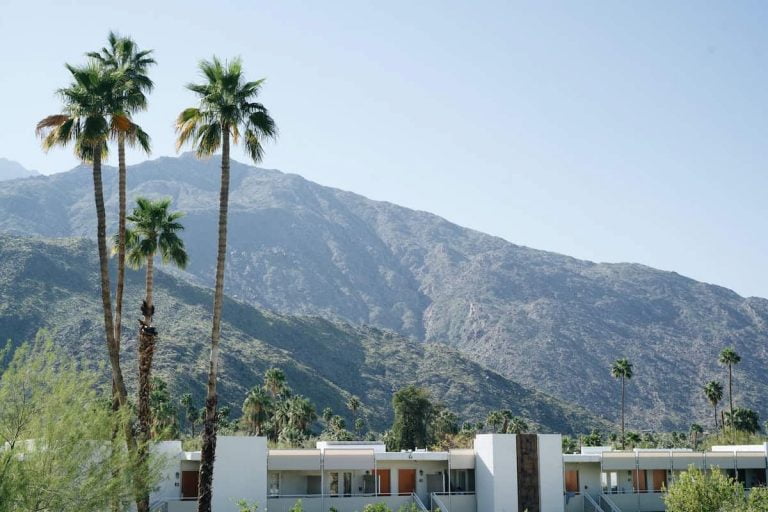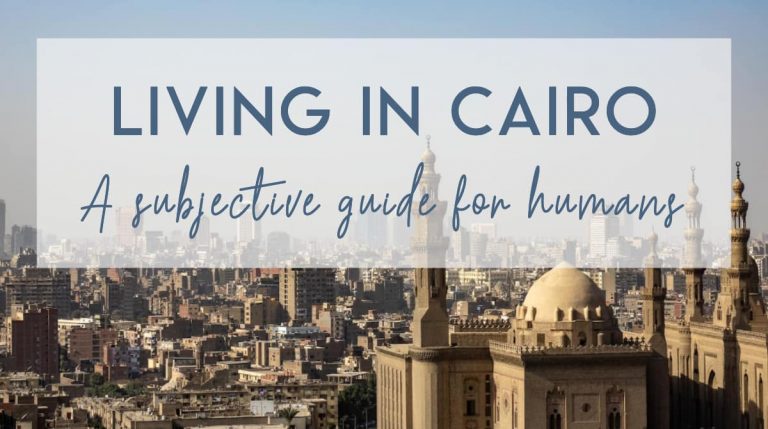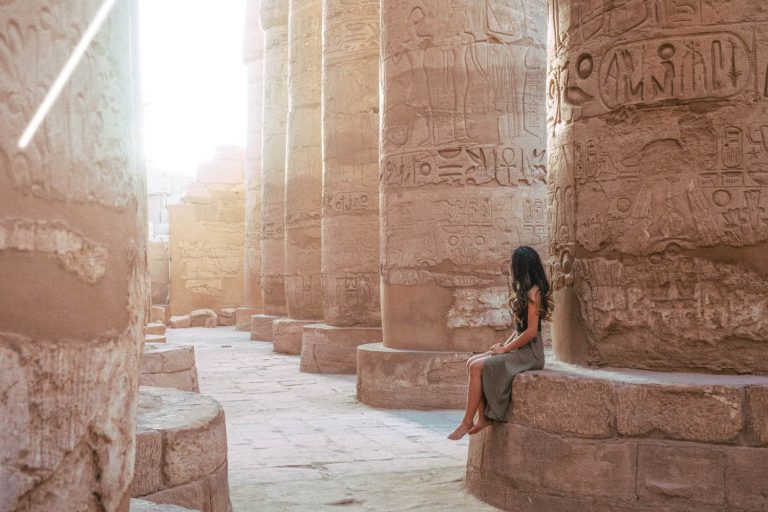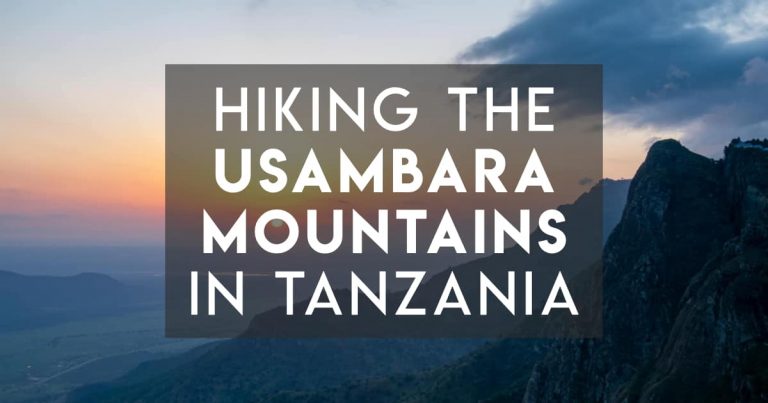A Long List of Surprising Things about Buenos Aires and Argentina
We just wrapped up staying in Buenos Aires for 5 months.
I’ve wanted to visit Argentina for the past 20 years; just never got to it, as it was so far from… everywhere I’ve lived long-term.
But I finally got there, and I’m really glad, as it exceeded my lofty expectations.
Despite having thought about Argentina for a VERY long time, there were many surprising things about Buenos Aires (and Argentina generally) that I only learned after I arrived. Nobody had written about them, so I’m sharing them here.
I’ll definitely be back to Argentina in the future. I wonder what more I’ll learn next time?
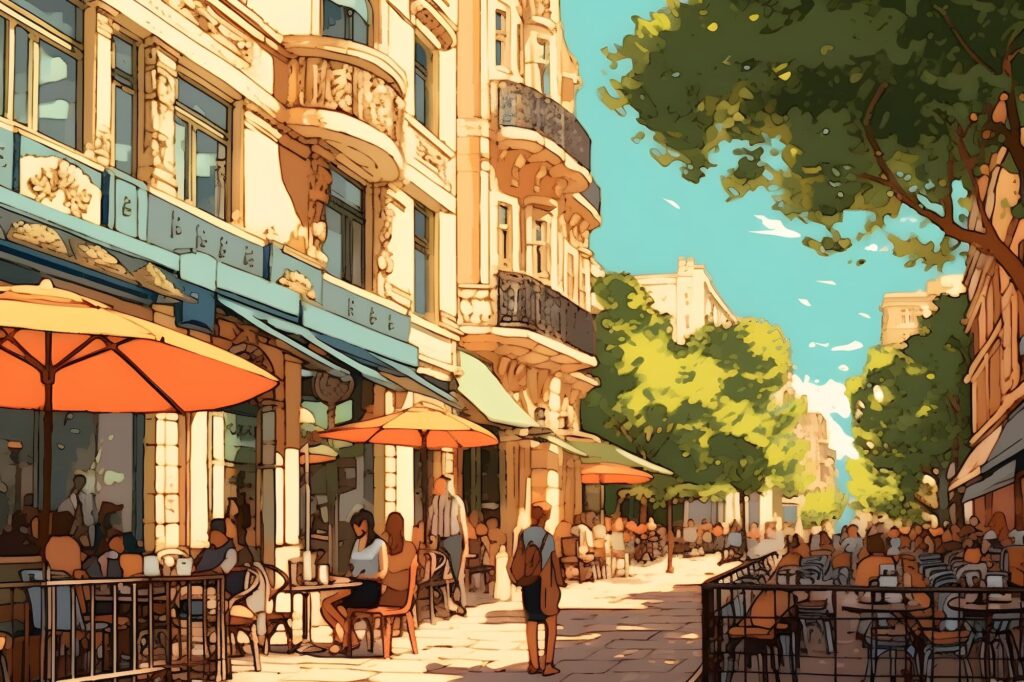
You might also like my slightly more organised guide to living in Argentina as a temporary visitor / foreigner.
Foreword on Currency and Prices
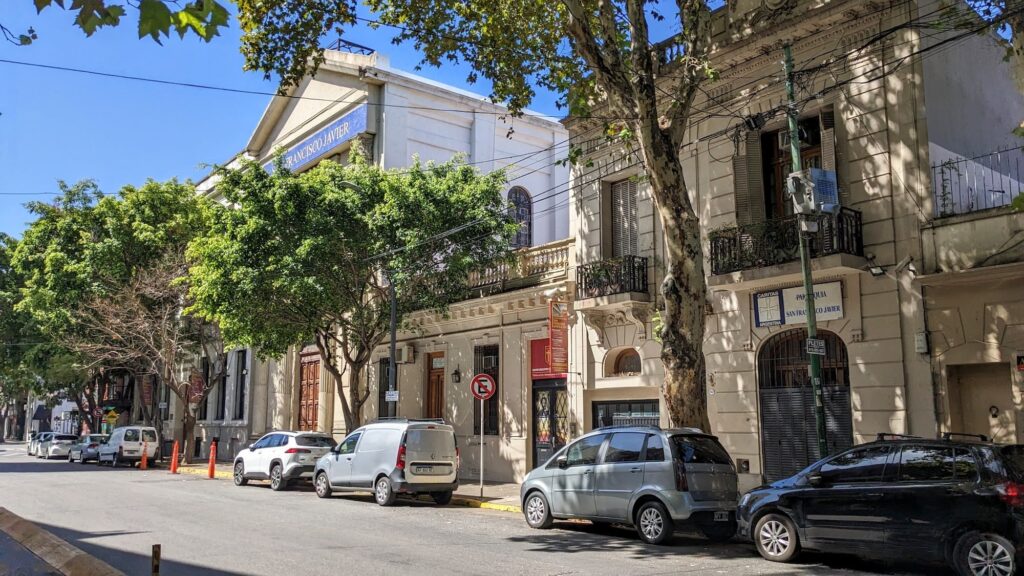
In this article, I’ll mention prices in USD, and here’s why.
Before getting to Argentina, I knew that it was in the midst of an economic crisis. I knew that it had 100% inflation, though I didn’t know what it meant in reality.
Here’s what 100% inflation means in reality: Prices of everyday goods and services — everything from fruits and vegetables, hair cuts, and taxi fares — go up by 5-10% every month.
Things everywhere don’t go up in price at the same time. It’s not well-coordinated. So it means you can practise a bit of arbitrage, buying some goods from some places, and other goods from others. But doing so means you have to keep an eagle eye on prices.
At the same time, the unofficial market rate for the USD, known as the “blue dollar” (and checkable on bluedollar.net, or by initiating a Western Union transfer) goes up as well. Over the course of our five-month stay, the USD went up from roughly 330 ARS to around 500 (about 8% a month).
Bur for many locals, their wages do not go up in lock-step. So many people are becoming poorer. Access to housing is becoming even difficult. Unemployment is rife, social inequality is massive and rising, and access to imported goods or foreign currency is very difficult.
Many earn US$200 a month and subsist on that. Even a mid-ranking white-collar office worker for a multinational (like PwC) would earn less than $1000 a month.
So absolutely do not go about brandishing your foreign currency saying Argentina is “cheap” on social media.
It’s not the first time I’ve visited a place where I had tremendous buying power compared to locals, so I’ve learned to respect that what’s easy for me isn’t easy for others, to practise tact, and to be generous where I can.
Also, due to inflation, I’ll mention prices below in US dollars, which represents a more stable peg.
People in Argentina Really Do say “Che” a Lot
One word / exclamation I’ve long associated with Argentina is the word “che”.
You may have heard of the Cuban communist revolutionary / guerilla / commander of the Cuban military, Ernesto “Che” Vergara, equally reviled as a brutal leader as he was loved for his dedication to his people and to revolutionary ideals. “Che” Guevara was originally Argentinian, and he got the nickname “Che” because Argentinians use the word “Che” all the time.
“Che” is a typically Argentinian word, and roughly is used in the same way as “Hey” in English, or other interlocutions like “y’know” or “like”.
Took me a while to warm up to saying it, but it was really fun to bring it into my vernacular.
See here for a broader guide to Argentinian Spanish differences.
Argentinians Drink (Yerba) Mate Everywhere, All the Time
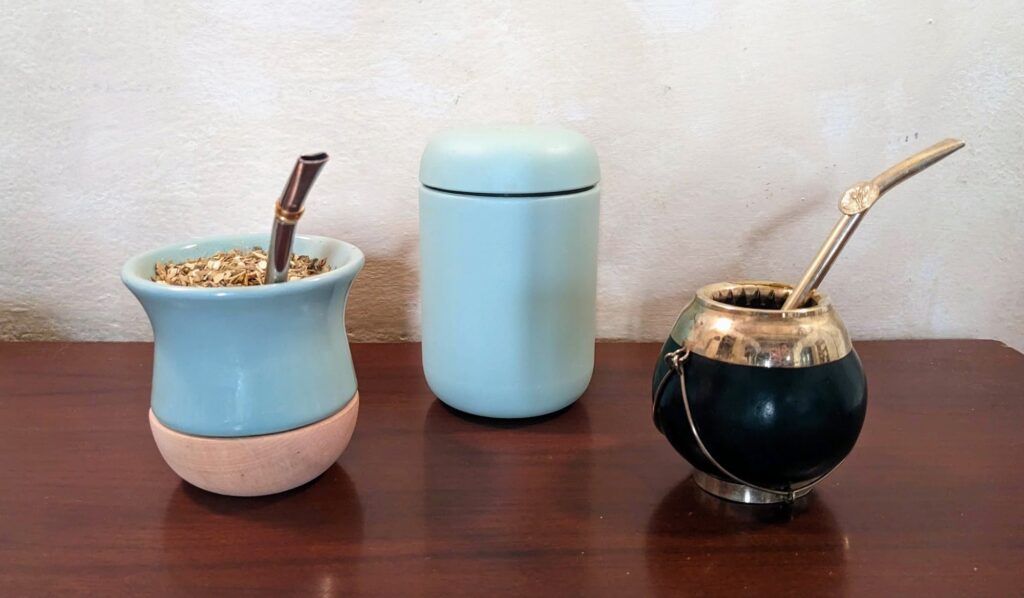
I had always heard about “yerba mate”, which people just call “mate” in Argentina. But I didn’t know that all kinds of people — regardless of age, gender, race, social class, or wealth status — drink it everywhere, all the time.
People drink litres of mate a day, and drink it in parks, at work, on transport, at the gym, while driving, while camping, and everywhere else. It’s a social drink, a pause from life, a stimulant, and it’s also purportedly quite good for you.
See my yerba mate FAQ for foreigners here.
It took me a while to get into drinking mate, but it eventually replaced half of my coffee habit. It’s a fun social drink, refreshing, and goes great with a local pastry. Speaking of which…
“Facturas” Doesn’t Mean “Invoices”

A few times after a meal, a server would ask me if I wanted a coffee and an “invoice”. I politely declined. I didn’t need to claim that meal on tax purposes…
Then I noticed the word in odd places in bakeries. The penny dropped; it didn’t mean what I thought it meant!
“Facturas” in Argentina means “pastries”. These include the medialuna, a croissant-like pastry that has its own identity in the country. (Many places serve medialunas alongside croissants.)
But “facturas” also includes a range of things that don’t even have specific names that everyone knows, but generally are classified as light sweet / greasy things that go great with coffee or mate.
Buenos Aires Has Lots of Vegan / Vegetarian Options (if that’s your thing)
Buenos Aires — and a few regional more hipster towns like Bariloche — have a surprising number of vegetarian and even vegan options.
I’m neither vegan nor vegetarian, but I definitely associated Argentina with meat and wine. People would always say, when reflecting on Argentina “Oh, the meat. And the wine!”
So I was pleasantly surprised to see that even if you don’t eat meat, many restaurants in central Buenos Aires have vegetarian options, and there are also many restaurants that are exclusively vegetarian or vegan, plus many health food shops that specialise in that kind of thing.
And speaking of not drinking wine…
CABA Non-Alcoholic Options are Good
Wine is cheap and good in Argentina. About US$5 gets you a decent bottle of Malbec from any local store.
And bars are cute, abundant, and excellent.
But if you don’t drink wine — or don’t drink at all — there are always a few good choices from bars. Argentina gets its fruit-eating culture from the rest of Latin / Central America.
One of my favourite non-alcoholic drinks, common across South America, is a lemonade made with mint and ginger (limonada con jengibre y menta). It’s near ubiquitous, light and refreshing, and you can often buy it by the jug to share.
Finding Restaurants in Buenos Aires is an Art
If you’re after the best pizzerias, parillas (grills), or cafes, then I have a surprising bit of information for you: Google Maps is not your best friend.
Even after months of staying in one neighbourhood and poring over Google Maps, we’d stroll past a restaurant that seemed busy, look it up, and be shocked to see it had a high rating and thousands of reviews. But we never “discovered” it organically.
When we asked friends where to get a pizza, we were shocked when they recommended a place two blocks from our house that was not only excellent, but had thousands of reviews, and that we had never seen.
To find good places to eat and drink, you MUST ask around — and not from other tourists (who just recommend Don Julio, where you’ll pay four times the price for a not-always better product).
I also had pretty good luck browsing the /r/BuenosAires forum on Reddit. The recommendations there were good.
For example, parillas!
There are Good, Local Alternative Parillas to Don Julio
A parilla is a restaurant that serves grilled meat. Ask any tourist for a good parilla recommendation, and they’ll tell you to go to Don Julio in Palermo.
But Don Julio is outrageously expensive for locals, and even decently expensive for foreigners. For a good meal for two, we paid around $100 USD. It would be easy to spend more (only one of us drank wine). That’s fine for some tourists, but not for everyone.
At Don Julio, you do get white-glove treatment, and many details are excellent. You’ll never get something bad there. But guess what? For some meats — the core product — I’ve had better elsewhere.
A few recommendations that frequently pop up as local recommendations to Don Julio are:
- Parilla Peña
- El Ferroviario
- La Brigada (San Telmo)
These and many others are worth a visit.
As for getting there…
Buenos Aires Public Transport is Decent and Shockingly Cheap (even for locals)
Yes, for people with foreign currency, Uber and taxis are cheap — expect to pay $2-5 for many trips around town. But public transport is another order of magnitude cheaper!
There’s a decent metro (called the “subte”, short for “subterráneo”) network and bus network across the whole city. We went to a bunch of places and generally only had to walk around 5-10 minutes on each end.
You can use Google Maps to navigate around with bus and metro, and it works quite well, if you’re willing to tolerate a slight delay by bus (add about 15 minutes to any estimated trip time). But there are usually seats, the vehicles are high quality, and it feels safe.
The crazy part is that it cost us so little, about 10 US cents per trip. It’s subsidised by the government. It’s cheap enough that it’s known to be cheap to locals, too, who are on a different income bracket to people with foreign money.
There are a couple of downsides to the transport system, though. Firstly, buses sometimes stop a few stops before their intended destination. We never figured out why. And secondly, the “Sube” cards are oddly hard to come by! But if you ask in a few metro stations, eventually you’ll find one that has them in stock.
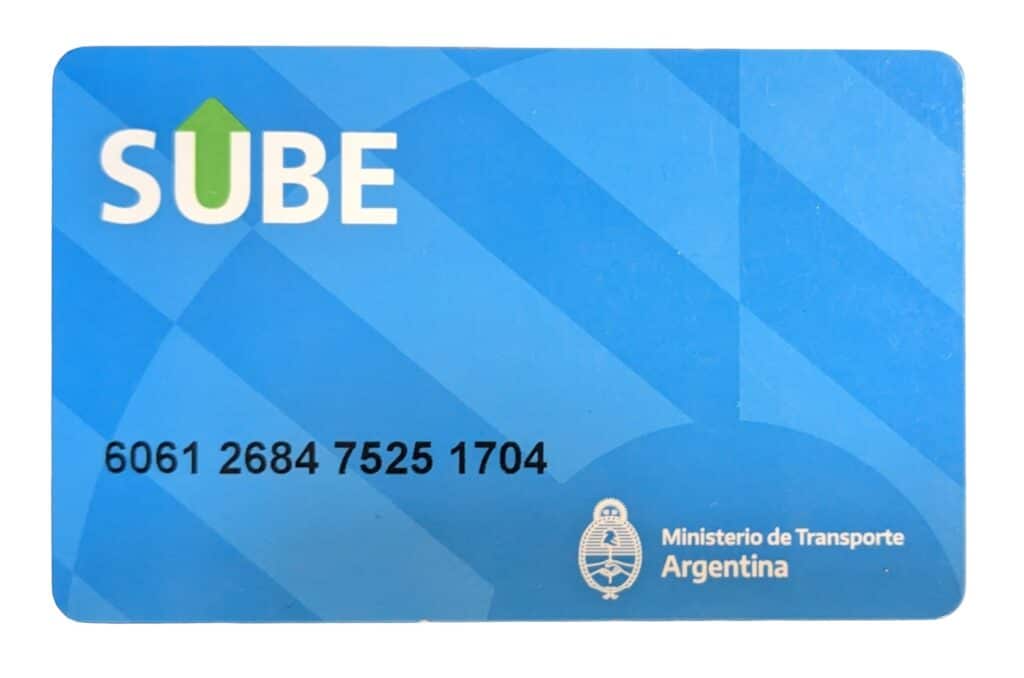
Pedestrian Crossings are Not for the Faint of Heart
There are actually zebra crossings everywhere in suburban Buenos Aires. In theory, walking across them, cars are supposed to stop for you.
But really, crossing a Buenos Aires pedestrian crossing is a game of chicken. If you insist, they’ll stop and won’t beep. But I wouldn’t push my luck, in case the driver is distracted.
Something else weird I noticed about Buenos Aires is that at intersections, there is nearly always a shortage of the “red / white walking person” indicator to tell you that it’s time to walk. There should be eight (for people going in each of two directions of four paths); there’s often just two or four lights.
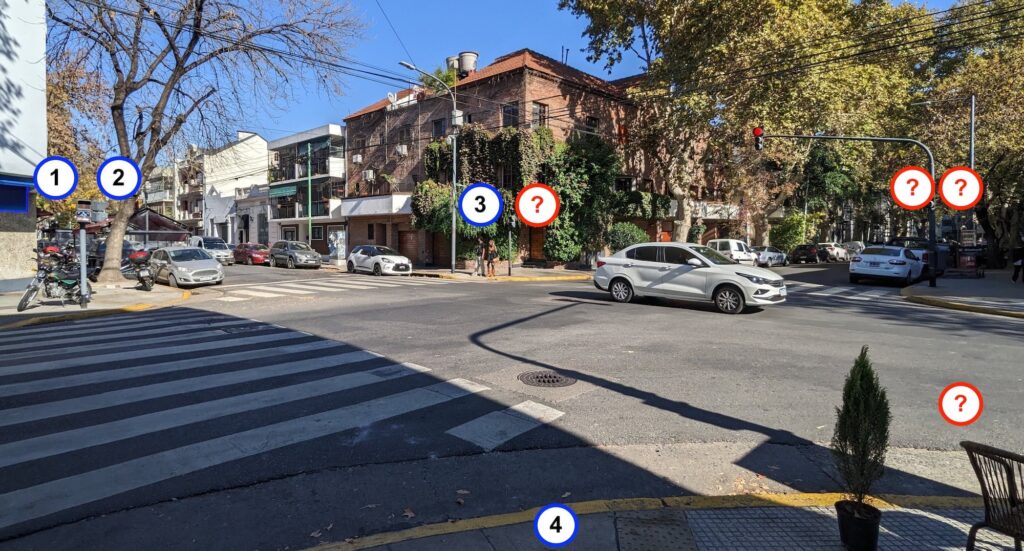
It’s kind of maddening. Why are there never (or very rarely) eight? There’s always enough traffic lights. Was there some shortage? Why does the number vary between two (covering just one of the four paths) and six (covering three of the four paths)? Why not distribute them evenly, so some people have to look backwards? And so on.
So anyway, you have to either crane your neck to find the other one that’s red or otherwise, or look at traffic lights, or just try our luck.
Four-Way Stop Signs are Four-Way “Go” signs
Generally, driving in Argentina is a mixture between order and chaos. It’s a bit like elsewhere in Latin America or Africa — people mostly respect traffic lights and lanes, but there’s always a bit of craziness, like a car parked in a lane, flashing their emergency lights while they dash in to get something from a shop, or people running a red light after quickly checking that nobody is coming.
But the craziest one for me is the four-way stop sign, quite common outside the city centre. Cars and bikes often go through stop signs at almost full speed, basically daring other vehicles to stop, in a game of chicken. It’s a bit scary.
At times when I was a driver, I was beeped at for not being aggressive enough. As a pedestrian, even when I knew I had right of way, I waited until things got calmer.
It Can Take Years to be Invited to an Asado

I keep coming back to food. But it’s a big part of Argentinian culture!
You can go to any parilla-style restaurant in Argentina to get asado-type meats. But what’s really special is when you’re invited to a friend’s place for an asado. It only happened after I knew someone for months — and it can take years for others.
An asado is a very laid-back affair, involving appetisers, meat, and wine. They start late, and finish very late (definitely past midnight). It’s actually mostly social, and not really about food, though it’s also about food.
See this article (forthcoming) for an intro to Argentinian asado.
Outsiders Don’t Like People from Buenos Aires
People from Buenos Aires are known as porteños, naming them after the fact that it’s a port city.
Like people from many large, developed cities, porteños are often disliked for being snobs.
If you ask many Argentinians, they’ll say “Oh, I don’t personally hate people from Buenos Aires, but I know others who don’t like them because…” and then basically indirectly claim that that porteños think that everything in Argentina revolves around them because theirs is the best, biggest city, with the best stuff, the government, the money, and is thus the yardstick against which everything else should be measured.
Relatedly, porteños use their own words for things, and always talk about Buenos Aires stuff as if everyone should know what it is. You get the drift.
This isn’t an unfamiliar concept. Elsewhere in the world, New Yorkers, Londoners, and Parisians all have reputations in their relative worlds, some of it deserved (yes, people from big cities can be excessively parochial and snobby), but most of it overblown.
There are other generalisations people make about people from Buenos Aires, but I don’t want to give them oxygen and get into a pointless argument, so I’ll leave them for you to figure out over time!
You Need Wads of Cash for Daily Errands
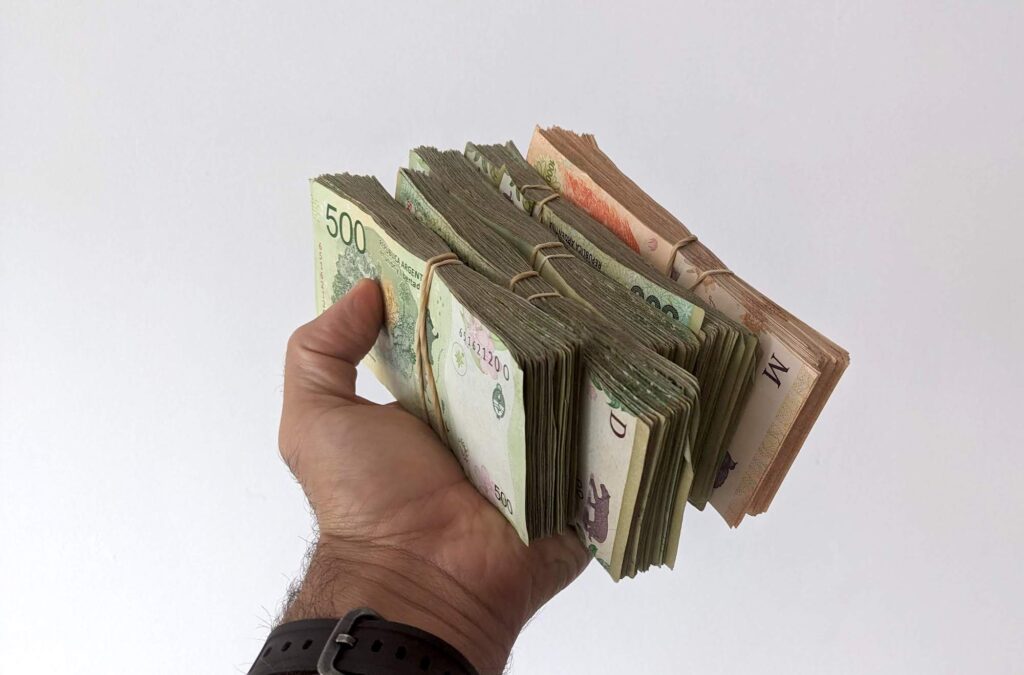
Because of the weird exchange rate, you need large amounts of money for daily errands.
As foreigners, we would usually spend something like 300-500K ARS a month, all included, other than for our accommodation. The above photo shows 300K, mostly in 500 peso notes.
Argentina is quickly putting out currency of bigger denominations. But it’s hard to keep up, so the largest notes are only worth a few US dollars.
This, coupled with the fact that the credit card exchange rate was lower than the “blue dollar”, meant that I had to carry around significant number of notes for “just in case” expenses, like if I decided to do some shopping while I’m out.
PS the above amount of money is more than many people earn in a month — it’s about $700 worth, and was right after we wired money to ourselves for about a month’s expenses. To some, that’s a shocking amount of money, and to some, it’s a shockingly small amount of money for a month’s expenses. Wealth has many layers of inequality and I’m frequently reminded to be grateful.
Online Shopping in Argentina is Awesome
I really like all the online services available in Argentina, particularly in Buenos Aires.
Of course, there are places with better, faster online shopping, like China (where same-day shipping is the norm), and the US (where you can get anything).
But most parts of the world either don’t have good online shopping, or make it available only to people with a local ID card (Korea!)
Anyway, in Buenos Aires, you can do a lot with two apps, Rappi and PedidosYa. You can order food from ven up to an hour away, of really cool things like asado or (one of my favourites) a tabla de picadas — a whole plate of cheeses and cold cuts. And you can order groceries to be delivered in under five minutes.
If you want a more personal touch, you can directly text most shops by WhatsApp, and go and pick up your order, or have it delivered for a much lower fee than via the apps (but also, it might take hours to get there, as it did once!)
Locals have access to a local Amazon equivalent, Mercado Pago. It’s not available to foreigners (as you require a DNI to sign up), but we worked out a workaround!
The workaround for foreigners to use Mercado Pago without a DNI is to find the thing you want to buy and then find the business elsewhere — either their online web shop or their Instagram. The shops even appreciate this, as they can offer a lower price AND get more margin.
I thought I was being clever when I figured this workaround. But it turns out that many businesses suggest it, and many local consumers (who have a DNI) do it for better prices.
The Aires Really Are Buenos
Finally, if you wonder where Buenos Aires gets its name from, let me tell you this: The weather in Buenos Aires really is wonderful.
Yes, in the summer it gets hot and humid. But not excessively so — for too long, anyway. And in the winter, there are some very chilly days, but it won’t go below freezing.
Overall, Buenos Aires has very nice weather, especially in the shoulder seasons. If there’s one period in which I’d suggest you go, it’s either in Spring or Autumn.
But any time you visit Buenos Aires is a special time. We’re looking forward to being back.

